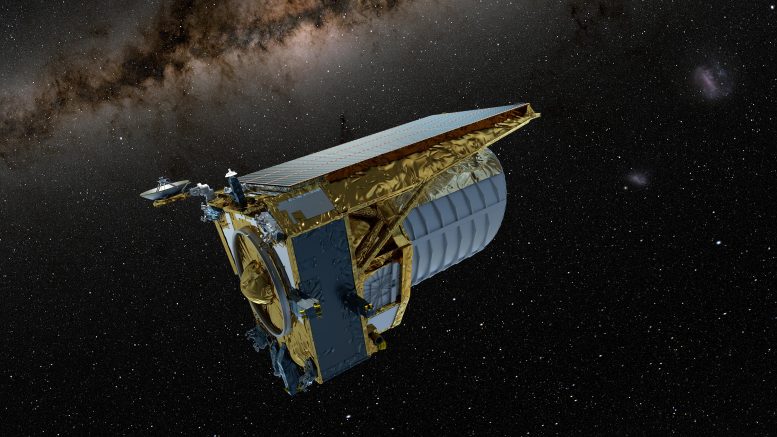
Artist’s impression of the Euclid mission in space. Euclid is designed to look far and wide to answer some of the most fundamental questions about our Universe: What are dark matter and dark energy? What role did they play in the formation of the cosmic web? The mission will catalog billions of distant galaxies by scanning across the sky with its sensitive telescope. Credit: ESA
The European Space Agency’s Euclid spacecraft has been fueled with hydrazine and gaseous nitrogen in preparation for launch on a SpaceX Falcon 9 this summer. The highly toxic hydrazine, used for propulsion and spacecraft disposal, is handled by experts wearing protective suits.
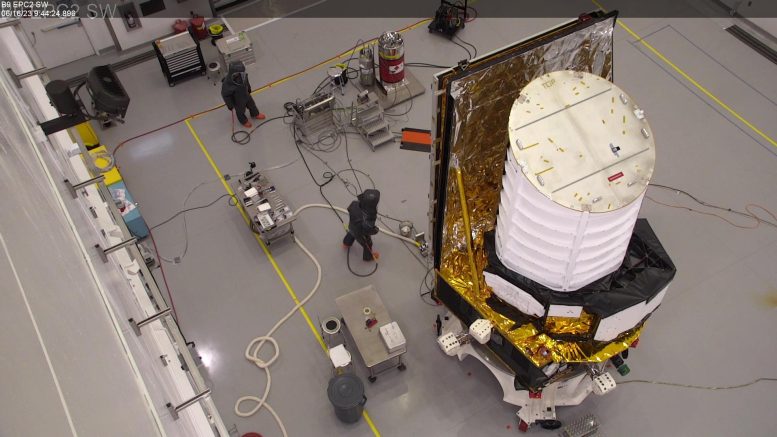
ESA’s Euclid gets fueled inside an Astrotech facility near Cape Canaveral in Florida (USA) ahead of its launch on a SpaceX Falcon 9 this summer. Credit: Astrotech (Mack Russo)
ESA’s Euclid spacecraft is supplied with two types of propellant: hydrazine and gaseous nitrogen. Ten hydrazine thrusters will provide chemical propulsion to complete the journey to Sun-Earth Lagrange point L2, perform monthly maneuvers to stay in orbit, and dispose of the spacecraft at the end of the mission’s life. 140 kg of hydrazine is stored in one central tank. Fueling the spacecraft is a delicate operation because the hydrazine fuel is highly toxic. The task has to be carried out by experts who each wear a self-contained atmospheric protective ensemble, or ‘scape’ suit.
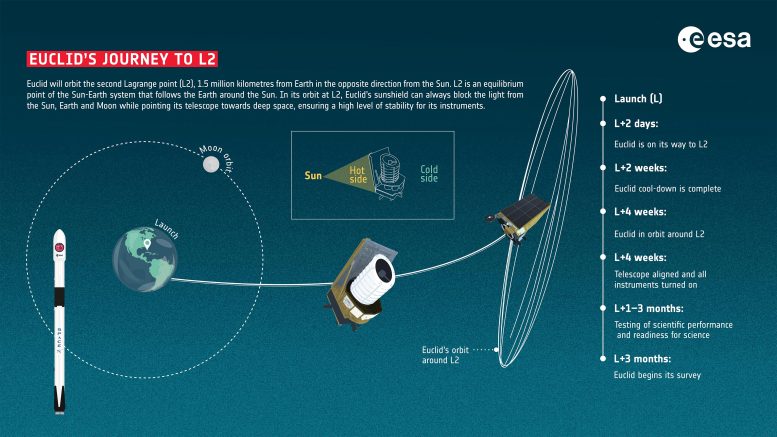
The Euclid spacecraft is set to orbit the Sun-Earth system’s second Lagrange point (L2), situated 1.5 million kilometers from Earth opposite the Sun. This equilibrium point will allow Euclid’s sunshield to continuously block sunlight and light from Earth and the Moon, thus pointing its telescope towards the vast expanse of deep space and ensuring stability for its onboard instruments. Credit: ESA
ESA’s Euclid will orbit the second Lagrange point (L2), 1.5 million kilometers from Earth in the opposite direction to the Sun. L2 is an equilibrium point of the Sun-Earth system that follows Earth around the Sun.
In its orbit at L2, Euclid’s sunshield can always block the light from the Sun, Earth, and Moon while pointing its telescope towards deep space, ensuring a high level of stability for its instruments.
At L2, Euclid joins ESA’s Gaia mission and the ESA/NASA/CSA James Webb Space Telescope, which are also orbiting around this equilibrium point, each following well-separated trajectories.
- ESA’s Euclid gets fueled inside an Astrotech facility near Cape Canaveral in Florida (USA) ahead of its launch on a SpaceX Falcon 9 this summer. Credit: Astrotech (Mack Russo)
- ESA’s Euclid gets fueled inside an Astrotech facility near Cape Canaveral in Florida (USA) ahead of its launch on a SpaceX Falcon 9 this summer. Credit: Astrotech (Mack Russo)
- ESA’s Euclid gets fueled inside an Astrotech facility near Cape Canaveral in Florida (USA) ahead of its launch on a SpaceX Falcon 9 this summer. Credit: Astrotech (Mack Russo)
- ESA’s Euclid gets fueled inside an Astrotech facility near Cape Canaveral in Florida (USA) ahead of its launch on a SpaceX Falcon 9 this summer. Credit: Astrotech (Mack Russo)
To deliver images of the highest quality, the Euclid spacecraft must ensure a very precise and stable pointing. For accomplishing this, Euclid will use six cold gas micro-propulsion thrusters fed by nitrogen stored in four tanks at high pressure. The stored 70 kg of nitrogen will ensure a mission lifetime of at least six years.
Euclid is a space telescope developed by the European Space Agency (ESA), with a primary objective of delving into the mysteries of the dark Universe. The mission aims to produce the most extensive and accurate 3D map of the Universe ever created, capturing 10 billion years of cosmic history. Through this exploration, Euclid will examine the Universe’s expansion and the distribution of large-scale structures across space and time, shedding more light on gravity’s role and the enigmatic nature of dark energy and dark matter.

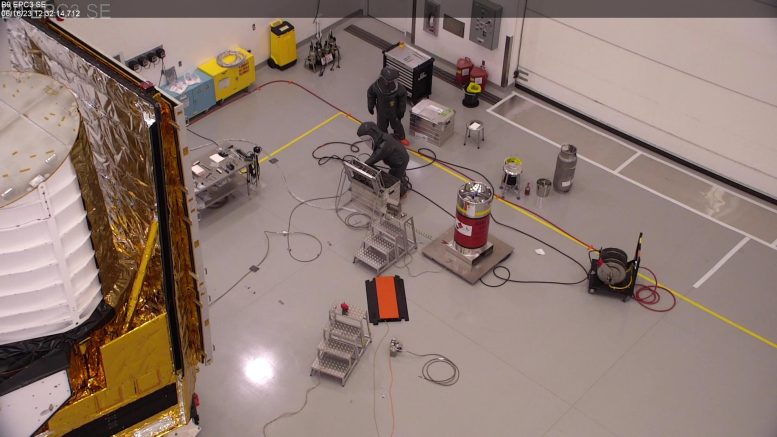
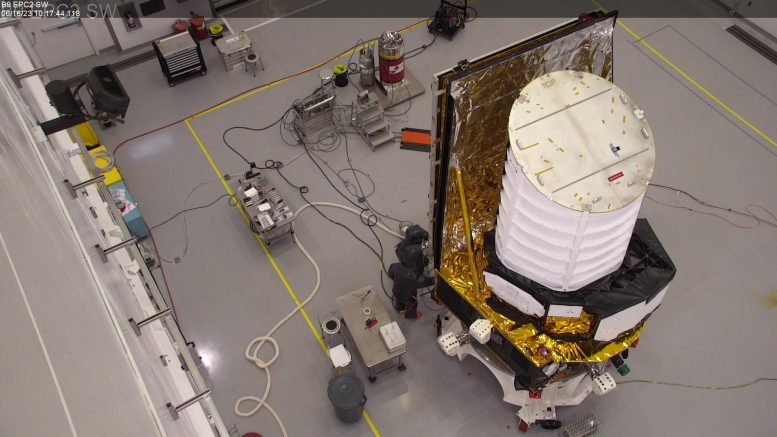
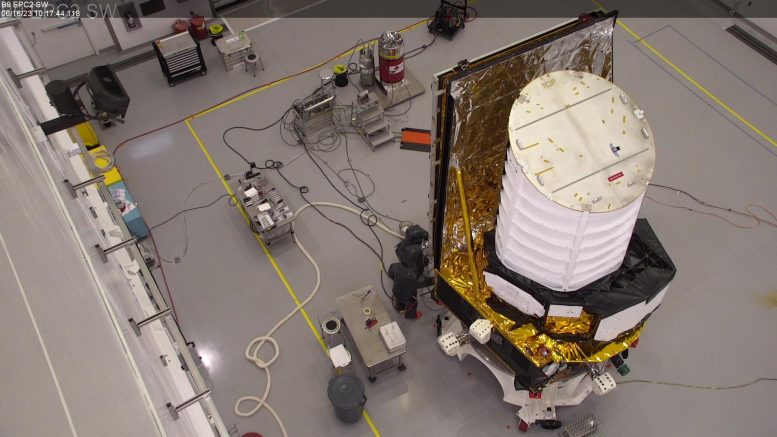
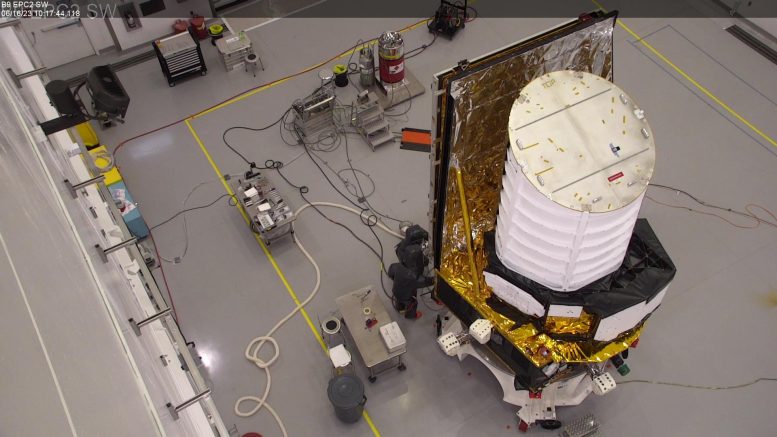

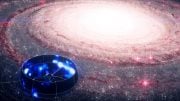
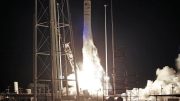

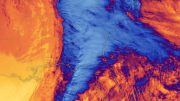
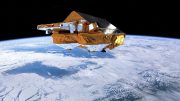
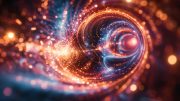
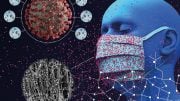
I get too many annoying ads while reading your journal.
There is NO SUCH THING as Dark Energy (and quite possibly Dark Matter as well). I’m get SO SICK of people wasting millions, even BILLIONS of dollars looking for something that doesn’t exist. These are purely mathematical FUDGE FACTOR FIXES invented by humans who cannot fathom that someone made a mistake in the process somewhere so they invent something to “fix it”.
It’s just unbelievable that scientists can’t accept the simple proposition that their Red Shift assumptions are just flat out wrong. There’s even a new theory about exactly how it’s wrong that eliminates Dark Energy quite deftly and solves several intractable other issues with the Universe (including that is is NOT actually expanding, but is stable like Einstein originally believed. The expansion is an illusion caused by the changing mass over long periods of time according to this theory).
Your personal opinion aside, for example the recent DES3 saw dark energy at 11 sigma quality where 5 sigma is the threshold to observe something beyond reasonable doubt. And the article above show all of us how the investment isn’t wasted as science and of course not as benefitting society to a much larger return. The spectroscopy technologies that goes into JWST, say, are used in hospitals and save much more money than invested in the JWST development.
As for your fantasy ‘theory’ you say essentially nothing. Was the comment just an effort to troll science with personal ignorance incredulity amid concomitant delusions of grandeur!?
From the Science interesting article:
“IN 2007, ESA RECEIVED PROPOSALS for two missions that, using different techniques, would take the search for dark energy into space for the first time. One proposal, called the Dark Universe Explorer, would rely on a technique called weak gravitational lensing … The second proposal, called the Spectroscopic All-Sky Cosmic Explorer (SPACE), would exploit so-called baryon acoustic oscillations (BAOs)… With two compelling cosmology missions to choose from, ESA suggested merging them onto a single spacecraft and, in2011, Euclid was approved. But it wasn’t an easy marriage. “It was complicated,” says John Peacock of the University of Edinburgh, one of the founding fathers of the Euclid mission. “There were a pile of experimental trade-offs.””
“EUCLID NOW SITS in a Florida cleanroom, ready for its early-July launch and monthlong journey to L2, a gravitational balance point 1.5 million kilometers from Earth where NASA’s JWST space telescope also resides. Euclid’s U.S. rivals, the Roman telescope and the Rubin observatory, will join the dark energy hunt later. The three projects will look at different parts of the sky, at different wavelengths, and with overlapping combinations of the three primary techniques (weak lensing, BAO, supernovae). Roman, with a larger mirror than Euclid, will peer further into the past but over a smaller sky area. The ground-based Rubin will not see as far as the other two, but its optical and infrared survey will be the widest.”